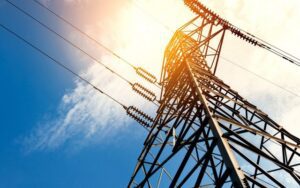
Germany is ready to hold a conference on reforms in Ukraine in 2024, German Minister for Economic Cooperation and Development Svenja Schulze said.
“The restoration of a free and democratic Ukraine is our joint goal. Recovery and reforms are elements of what will be a strategic task for the coming years. Therefore, Germany will also host an international expert conference on reconstruction issues. Germany is also ready to host a conference on reforms in Ukraine in 2024 “, she said at the International Conference on the Reconstruction of Ukraine in Lugano (Switzerland) on Tuesday.
Schulze emphasized that the platform for the restoration of Ukraine should unite the Ukrainian government, all international partners and experts.
In addition, the minister stated that her government is committed to providing grants in the amount of EUR426 million in direct support to Ukraine.

Over seven days of daily auctions by NPC Ukrenergo for distribution of access to a cross-section for exporting electricity to Romania, the price of a cross-section increased to UAH 106 million.
Including, according to the results of the auction on July 6, the seventh day after the opening of exports to Romania, 8 winners of the auction, who divided the daily cut, must pay a total of UAH 19.8 million.
The highest cross-section price at this auction was the price at 23:00 – UAH 10.9 thousand UAH/MWh, which was shared by DTEK Zakhidenergo (by 60 MWh), Latest Technologies 3000 (by 15 MWh). h), ERU Trading (by 14 MWh), Energoatom (by 10 MWh) and Smart Trade Energy (by 1 MWh). The absolute record of the week is still the price of 11.67 thousand UAH/MWh. At the same time, experts note that traders in many positions are ready to pay for a cross-section significantly higher than the selling price of a resource in Romania for these hours.
In general, this time, as in previous auctions, more than half of the daily capacity was bought by DTEK Zakhidenergo (for export, a total of 1,377 MWh out of a possible 2,400 MWh per day).
“Le Trading” Ukraine bought a section for export of 281 MWh, “ERU Trading” – for 220 MWh, “Energoatom” – for 239 MWh (yesterday it was only 30 MWh), “Latest Technologies 3000” – by 198 MWh, Nexttrade by 45 MWh, Smart Trade Energy by 24 MWh and DE Trading by 16 MWh.
Once again, the state-owned Ukrhydroenergo participated in the auction without results.
Also, Artlex-Energy and Ukr Gas Resource did not buy anything in this auction.
From Romania on July 6, the section was not reserved.
The section to Poland continues to be purchased at daily auctions in addition to the 147 MW capacity purchased at the monthly auction of DTEK Zakhidenergo – as of July 6, at 65 MW per hour (1560 MWh per day).
According to yesterday’s scenario, the daily cross-section to Moldova on July 6 was divided by Energoatom, which bought out a cross-section for export of 9400 MWh per day and Ukrhydroenergo – by 2400 MWh per day. Another 1 MW per hour (24 MWh in total) was bought by Energy Lab Ukraine, which had not previously participated in the auction.
The section price at all auctions, except for exports to Romania, is 0 UAH/MWh.
As reported, the import-export of electricity to Romania for 100 MW started on June 30. The number of auction winners varies from 5 to 9 participants.
On June 27, ENTSO-E agreed to start commercial exports of the first 100 MW to Europe. First, the resource will be supplied to Romania, then the directions to Slovakia and Hungary will be opened, but in general, the export capacity is 100 MW. In a month, Ukrenergo expects an increase in exports.

In June this year, Ukraine managed to export 2.7 million tonnes of agricultural products, bypassing its seaports – the key export infrastructure of the country, now blocked by Russian troops.
Export growth in June amounted to 30% compared to May, according to the website of the Ukrainian Agribusiness Club (UCAB) on Friday.
In terms of crops in June, grain exports amounted to 1.4 million tonnes (corn – 86%, wheat – 10%, and barley – 3%), having increased by 23% compared to May.
Ukraine exported in June 642,500 tonnes of oilseeds (sunflower seeds – 84%, soybeans – 14%, and rapeseed – 2%), which is 52% more than in the previous month. At the same time, vegetable oil was exported by 45% more – 298,500 tonnes, of which 94% is sunflower and 6% soybean.
Export of sunflower and soybean cake and meal in June amounted to 139,100 tonnes (sunflower – 81%, and soybean – 19%), which corresponds to an increase of 20% compared to May.
“The highest growth rates are demonstrated by oilseeds, namely sunflower seeds. For the Ukrainian market, sunflower seeds have never been an export-oriented crop. Almost the entire volume was processed in Ukraine, after which sunflower oil was exported. The situation has now changed, and it is the export of seeds that has begun to grow,” the association clarified in the message.
According to the UCAB, now the main buyers of Ukrainian agricultural products are the countries closest to Ukraine – Romania, Poland, Bulgaria and Turkey, while before the Russian invasion, the main trading partners of the country were China, India, the Netherlands and Egypt.
“The export of agricultural products needs priority in shipments by land in order to save such an important direction of Ukraine’s economy until the seaports are unblocked. Without establishing the export of all manufactured products, farmers will not have enough funds to harvest already sown crops, and even more so for the next sowing in 2023,” the association stated.
As reported, in May 2022 Ukraine exported 1.74 million tonnes of grain and oilseeds and agricultural products for export by all modes of transport, which is 1.8 times higher than in April.

Switzerland will invest in public and private projects to reduce greenhouse gas emissions in various fields of activity of Ukraine: infrastructure, construction, transport, energy.
The relevant agreements were reached between Minister of the Environment of Switzerland Simonetta Sommaruga and Minister of Environmental Protection of Ukraine Ruslan Strilets during the Ukraine Recovery Conference in Lugano (Switzerland).
“We have made the first practical step for Ukraine to introduce market mechanisms of the climate agreement, create new climate financing channels in Ukraine and incentives for green development for Ukrainian business… I am convinced that the agreement between our governments is a good start for the ‘green’ post-war reconstruction of Ukraine and the achievement of climate goals under the Paris Agreement,” the minister said on Facebook on Monday.
Strilets clarified that Ukraine had pledged to provide Switzerland with verified results of reducing carbon emissions into the atmosphere in return for the investments received.

Ukraine, as part of the post-war reconstruction, aims to build 7.1 GW of renewable energy facilities, Energy Minister German Galushchenko said.
“Our goal is to build 7.1 GW of new renewable energy capacity, moving to market models of green energy incentives, in particular green auctions. We also plan to install 750 MW of storage capacity in the first stage,” the minister said during an online high-level meeting “Green energy for the reconstruction of post-war Ukraine” (“Renewables to power post-war Ukraine”), organized in Brussels on Monday.
According to him, cited in the release of the Ministry of Energy, green transformation will be at the center of the post-war reconstruction of Ukraine, and the decarbonization of the energy sector of Ukraine is planned to be carried out, in particular, thanks to the development of safe and carbon-neutral nuclear energy.
“We are considering 10 GW of hydrogen exports from Ukraine to the EU, which the European Commission outlined as our starting figure,” the minister added.
The Solar Energy Association of Ukraine, for its part, announced that as a result of this meeting, it, the Ukrainian Wind Energy Association and relevant European associations WindEurope and SolarPower Europe signed a joint statement to the leaders of Ukraine and the EU calling for the use of renewable energy in the post-war reconstruction of Ukraine, setting a goal to achieve 50% renewable energy in the production of electricity until 2030 through onshore and offshore wind energy, as well as the development of rooftop and ground solar power plants.
“To achieve these goals, Ukraine and the EU must create a strong and sustainable technological, industrial and investment partnership in order to attract the necessary investments in renewable energy sources, as well as in sustainable and fully synchronized electricity networks. Therefore, we call on the leaders of Ukraine and the EU to create a special tool “Renewable energy for Ukraine” as part of the joint strategic plan for the reconstruction of Ukraine.
As noted in the association, the European Energy Commissioner Kadri Simson, who also took part in the meeting, reaffirmed the EU’s determination to support Ukraine – both during the war and during the period of reconstruction.

This summer, the International charity organization Parimatch Foundation financed the organization of sports camps for the physical and psychological rehabilitation of children affected by Russian military aggression in Ukraine. The foundation assumed all the costs arising from the organizing camps in three countries as part of the «Help to Ukraine» program.

– Children are our future, and our main task is to do everything possible to feel protected and be distracted from the worrying everyday life so they can immerse in the atmosphere of joy, sports, and communication with peers. We strive to preserve the childhood of Ukrainian children. Each of us understands how much children need summer rest and recovery. That is why the Parimatch Foundation initiated the organization of sports camps where children can not only dive into a positive atmosphere, choose a sports hobby, but also receive psychological support in this difficult time, – The President of the Charitable Foundation, Kateryna Biloruska, told.
Under the initiative of the Foundation, more than 300 children will be able to spend time in camps both in Ukraine and abroad.

On July 1, the first children’s camp will start in Zakarpattia and last for two weeks. The next camp is scheduled for early August.
The camp will host 200 children of different ages from different parts of Ukraine. There will be an exciting and busy 14 days for them. Yoga, football, volleyball, dance, gymnastics, hiking, and swimming classes are planned for kids. They will be divided into groups according to age and sports training preferences and will work with a separate sports mentor and coach of the Vodogray camp. In addition, under the initiative, children can choose classes based on their interests: music, singing, drawing, journalism, blogging, web design, foreign languages, etc. These classes are suitable for both children and teenagers.
One more camp program’s feature is the patriotic upbringing of the younger generation. They will learn about the State, its structure, central values, and its achievements. Every new day in the camp will be dedicated to a new topic. It can be The Day of Spirit and Unity, The Day of Economy and Financial Literacy, or The Day of Elections and Democracy. Each camp participant will be involved in quests, conferences, concerts, etc.
In addition, the first camp in Cyprus will start on July 3. From July to August, the BySport camp will be visited by more than 50 children from Ukraine, who can rest in the sunny country and learn its culture and traditions. As it is in Ukraine, the camp in Cyprus will be focused on sports and various training. Daily the children will have multiple sports training as well, as they will enjoy beach time. The camp program that includes not only physical but also mental relief for children was developed by our partners, the international Hope for Children Foundation.
The Parimatch Foundation is preparing a surprise for all children who visit the camps both in Ukraine and Cyprus – the visits of famous athletes who will spend the whole day with the children and share their success stories and sports secrets.

The final foreign camp will have 50 children from Ukraine in August. Everyone will have an opportunity to feel better and gain strength before the new school year.
The Parimatch Foundation believes that every child in Ukraine should get the necessary rest and energy boost this summer. First of all, we invited to the camp the displaced children from Kharkiv, Donetsk, Luhansk, and Zaporizhia regions, children from large families in the Kyiv region, Lviv region, and Ternopil region, as well as children whose parents have been injured in the war or are currently defending Ukraine at the frontline. Also, children-athletes from the Mykolaiv region will join the camp.
The Parimatch Foundation keeps doing everything possible to improve the health and well-being of society by providing children with equal opportunities and access to sports and education. That is why children’s camps initiated by the Foundation are focused on sports and physical activities. We are sure that sports will help to improve children’s mental health. While staying in the camps, the children will get psychological rehabilitation which is the priority area of work supported by the Foundation. Therefore, all centers’ programs include art therapy and group works with children to overcome fears, stress, and aggression.
We are sure that every day spent at Parimatch Foundation camps will be unforgettable for children, and summer 2022 will become calm, cozy, and full of love and support.